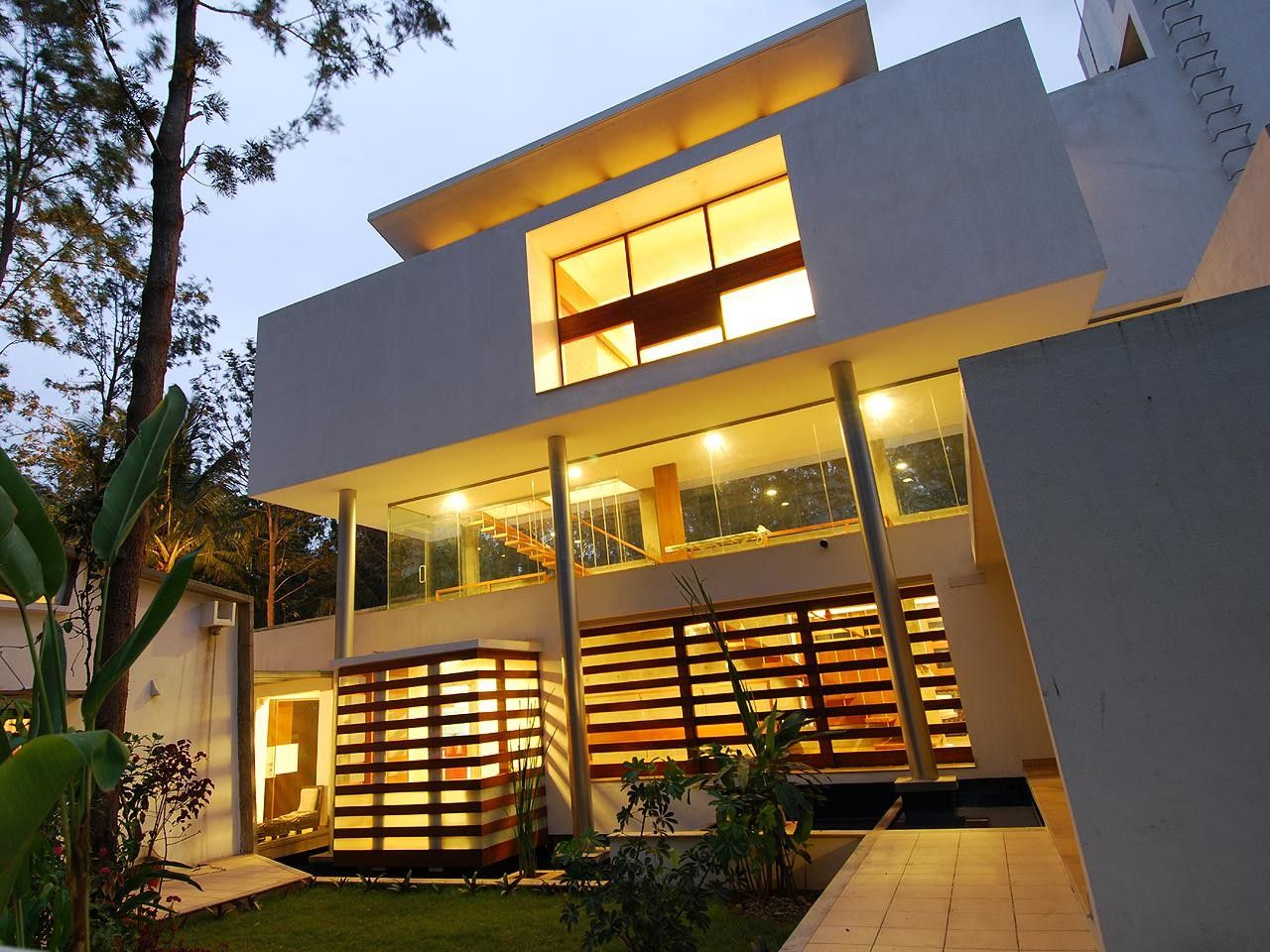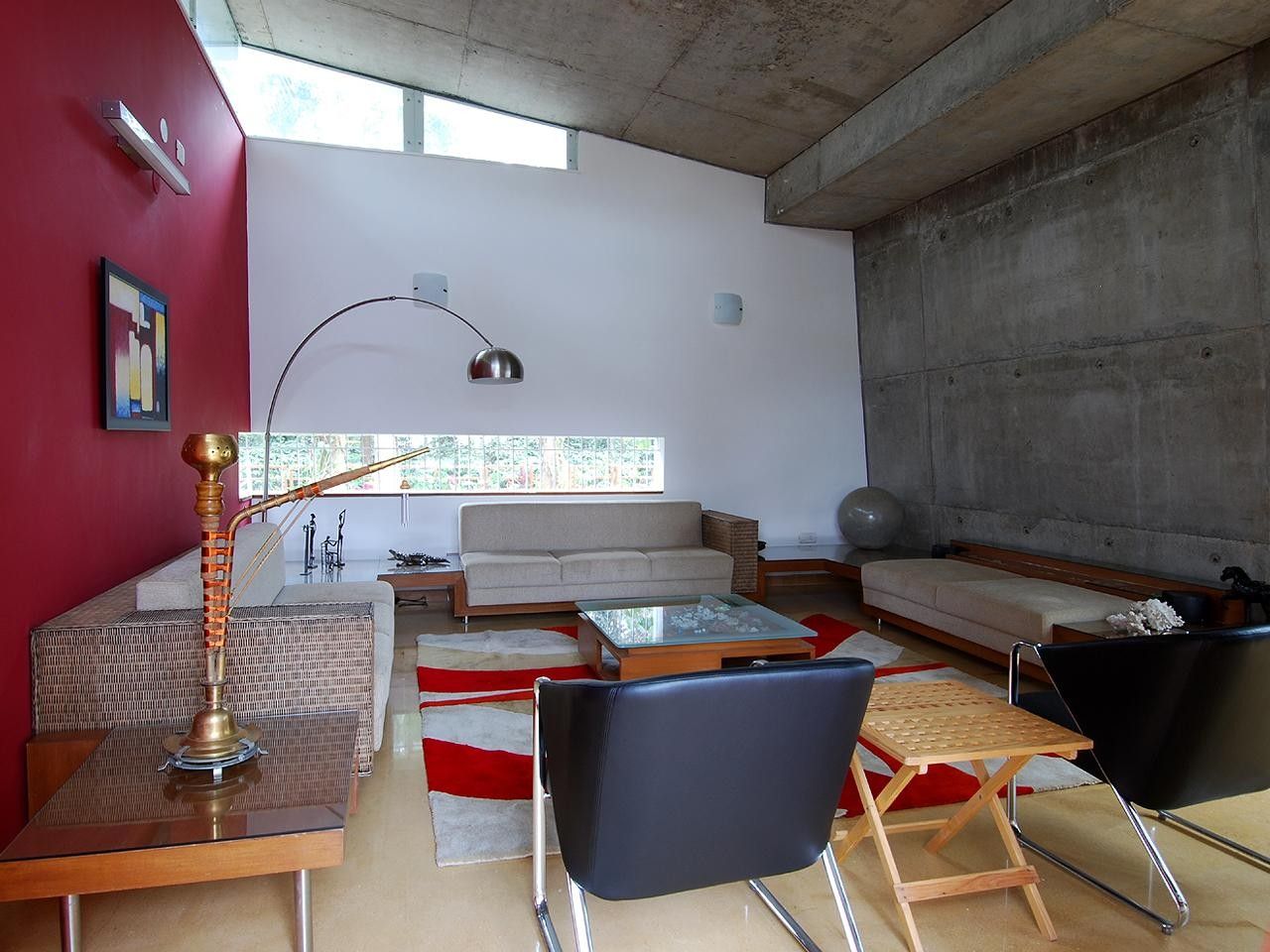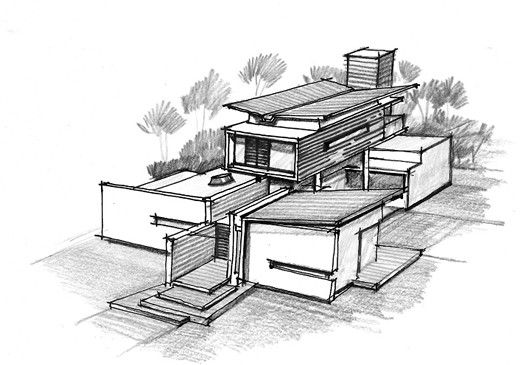Designed by Architecture Paradigm, Bangalore is an open-ended city having a nonconformist cultural agenda unlike other cities in India. It offers a sense of conceptual freedom, allowing us as architects to explore the diverse conditions arising out of the juxtaposition of histories and different cultures. We strive through our work to give expression to the layers that so vividly characterizes this landscape.
When planning to build a residence here in the urban context there are certain concerns that need to be addressed, arising out of its multivalent conditions. Here issues of density, deep-rooted cultural orientations, security, privacy, pollution, modest budgets, and the labor-intensive building industry are seen as potent local forces shaping architecture in the subcontinent in an age where the notion of globalization has entered the political, economic and cultural discourse.
Designed for three generations living under one roof which is a common situation in this area, the house of pavilions is an attempt at exploring emerging conditions. The three generations also imply an accretive attitude that allows slow accumulation or addition of things, remaining flexible with future growth and changes. Being located in a gated community on the edge of the city offers opportunities to explore this relatively new phenomenon which promises an escape from the hostilities of the dense city while still being connected to it. These communities are sought after and are desirable places for luxury lifestyles which demand a strong connection to the outdoors.
Due to the favorable climatic conditions, the idea of a shelter in Bangalore could be as minimal as an open pavilion with just a roof over it. There are few examples of these temporal structures used as markers, places of rest or as summer palaces in the past. Though the setting here, in this case, is not rustic isolation by the beach, a riverfront or in a forest clearing, it still offers the possibility of opening out to the landscape compared to the city house amidst dense and tighter conditions.
Open spaces in the context of traditional Indian houses have always played a crucial role usually seen as extensions of indoor spaces or as outdoor rooms which supported a wide variety of functions. An ideal example would be the courtyards which served as gathering spaces or sleeping areas during the summer, while at the same time helped in controlling light and temperatures keeping the houses cool in the hot summers.
Project Info:
Architects: Architecture Paradigm
Location: Bangalore, India
Project Year: 2011
Project Name: House of Pavilions
All Images Courtesy Of Architecture Paradigm
Courtesy of Architecture Paradigm
Courtesy of Architecture Paradigm
Courtesy of Architecture Paradigm
Courtesy of Architecture Paradigm
Courtesy of Architecture Paradigm
Courtesy of Architecture Paradigm
Courtesy of Architecture Paradigm
Courtesy of Architecture Paradigm
Courtesy of Architecture Paradigm
Courtesy of Architecture Paradigm
Courtesy of Architecture Paradigm
Courtesy of Architecture Paradigm
Courtesy of Architecture Paradigm
Courtesy of Architecture Paradigm
Courtesy of Architecture Paradigm
Courtesy of Architecture Paradigm
Courtesy of Architecture Paradigm
Plan
Plan
Plan
Plan
Section
Section
Sketch





























